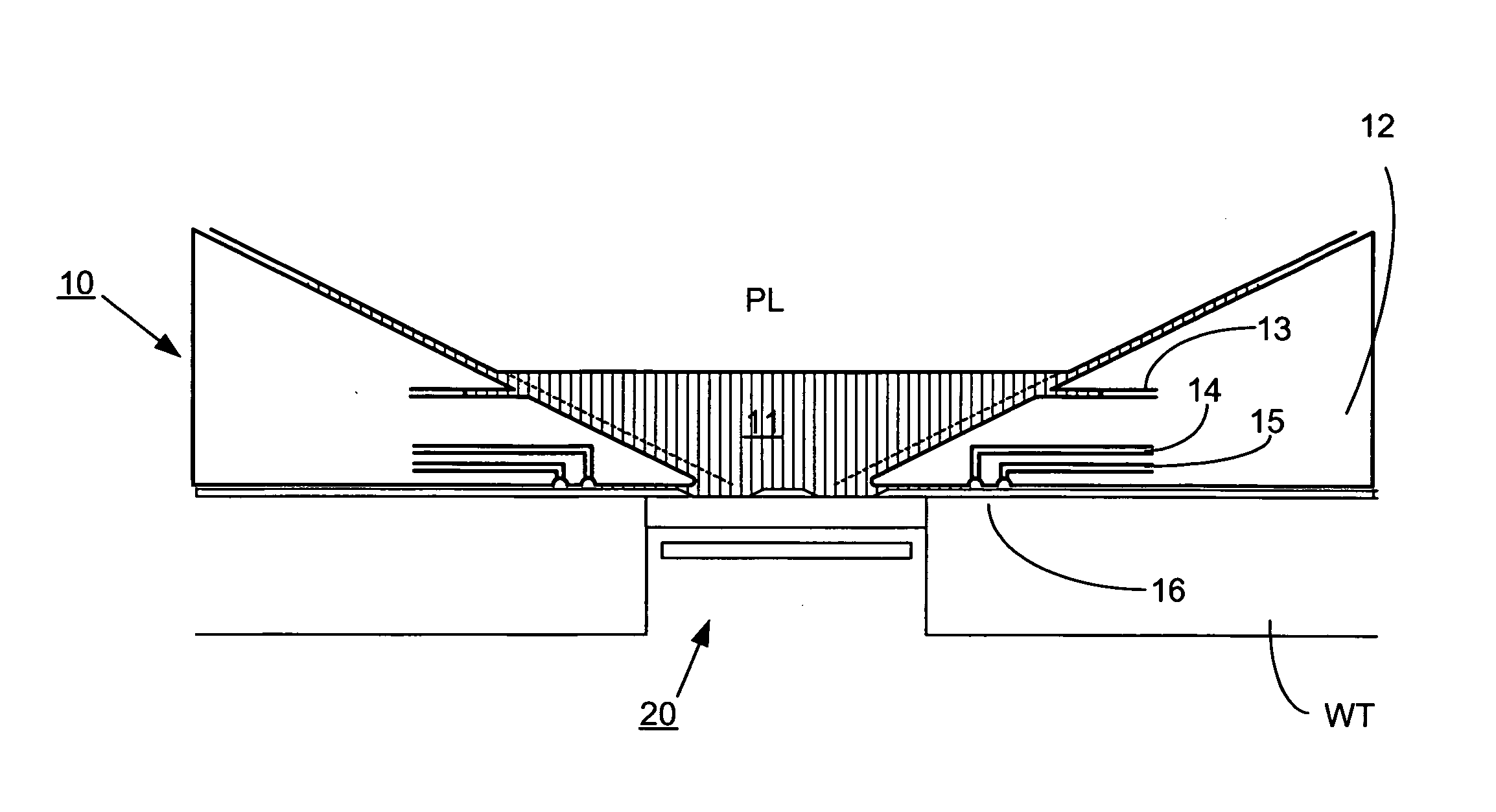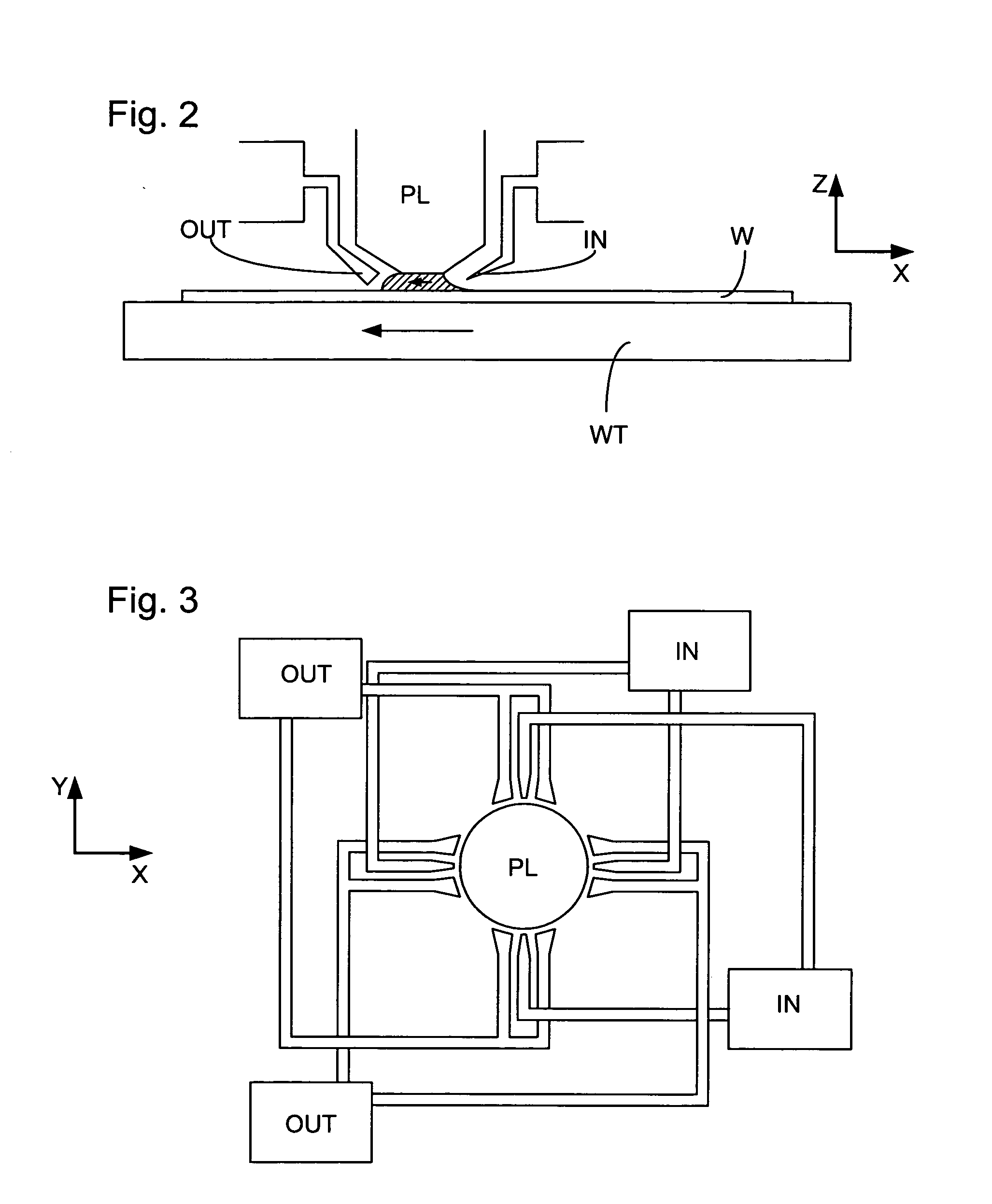Lithographic apparatus and device manufacturing method
- Summary
- Abstract
- Description
- Claims
- Application Information
AI Technical Summary
Benefits of technology
Problems solved by technology
Method used
Image
Examples
embodiment 1
FIG. 1 schematically depicts a lithographic apparatus according to one embodiment of the invention. The apparatus comprises: an illumination system (illuminator) IL configured to condition a radiation beam PB (e.g. UV radiation or DUV radiation). a support structure (e.g. a mask table) MT constructed to support a patterning device (e.g. a mask) MA and connected to a first positioner PM configured to accurately position the patterning device in accordance with certain parameters; a substrate table (e.g. a wafer table) WT constructed to hold a substrate (e.g. a resist-coated wafer) W and connected to a second positioner PW configured to accurately position the substrate in accordance with certain parameters; and a projection system (e.g. a refractive projection lens system) PL configured to project a pattern imparted to the radiation beam PB by patterning device MA onto a target portion C (e.g. comprising one or more dies) of the substrate W.
The illumination system may include v...
embodiment 2
A second embodiment will now be described with reference to FIG. 7 and is the same as the first embodiment except as described below.
In the second embodiment, the absorption element 100 comprises two metal layers 105, 107. However, in the second embodiment, the isolation layer 120 is made of an electrical insulation material and is sandwiched between the first and second layers 105, 107. Again, the isolation layer is only necessary where the stack of layers 105 and 107 would, without it, come into contact with the immersion liquid but, in an implementation, a continuous isolation layer is used to deal with imperfections in layer 105. Thus, the surface of the absorption element 100 is formed partly of the first metal layer 105 and partly of the layer of insulation material 120. In this embodiment the function of the layer of insulation material 120 is to electrically isolate the first and second metal layers 105, 107 from each other such that no galvanic couple exists. In this emb...
embodiment 3
A third embodiment will now be described with reference to FIG. 8 and is the same as the first embodiment save as described below.
In the third embodiment, there is no layer of insulation material 120. There are two layers 105, 108, one of which is a metal layer 105, for example Cr, and another of which is a non-metal layer 108, such as a ceramic, for example a metal carbide or nitride such as TiN. The layers 105, 108 may be either way around. This combination also has good resistance to galvanic corrosion and has an advantage of being easy to manufacture as each layer needs only to be about 100 nm thick.
PUM
 Login to View More
Login to View More Abstract
Description
Claims
Application Information
 Login to View More
Login to View More - R&D
- Intellectual Property
- Life Sciences
- Materials
- Tech Scout
- Unparalleled Data Quality
- Higher Quality Content
- 60% Fewer Hallucinations
Browse by: Latest US Patents, China's latest patents, Technical Efficacy Thesaurus, Application Domain, Technology Topic, Popular Technical Reports.
© 2025 PatSnap. All rights reserved.Legal|Privacy policy|Modern Slavery Act Transparency Statement|Sitemap|About US| Contact US: help@patsnap.com



